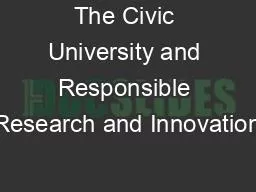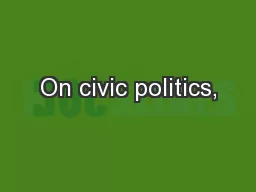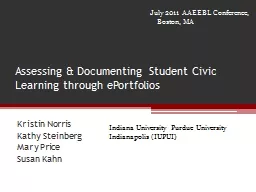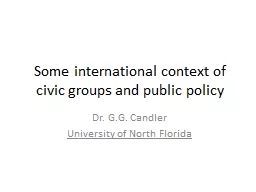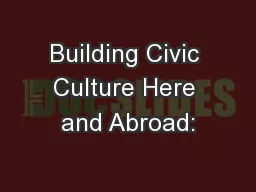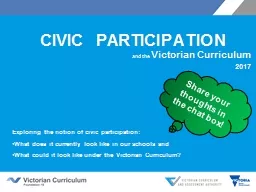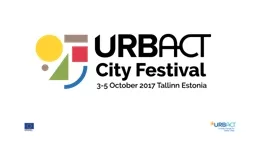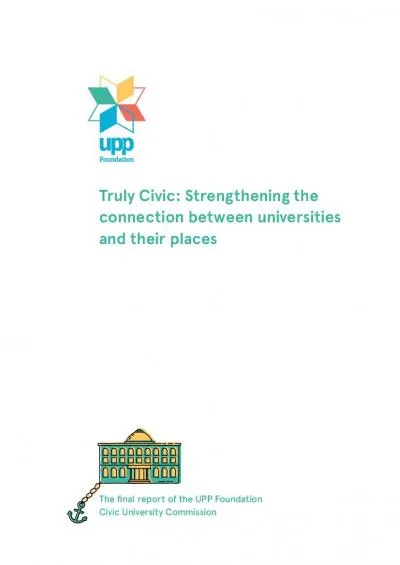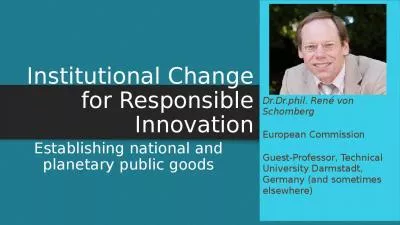PPT-The Civic University and Responsible Research and Innovation
Author : shoulderheinz | Published Date : 2020-08-04
John Goddard Emeritus Professor and Special Advisor to the VC Formerly Deputy VC Outline Global context Universities and the UN Sustainable Development Goals Convergence
Presentation Embed Code
Download Presentation
Download Presentation The PPT/PDF document "The Civic University and Responsible Res..." is the property of its rightful owner. Permission is granted to download and print the materials on this website for personal, non-commercial use only, and to display it on your personal computer provided you do not modify the materials and that you retain all copyright notices contained in the materials. By downloading content from our website, you accept the terms of this agreement.
The Civic University and Responsible Research and Innovation: Transcript
Download Rules Of Document
"The Civic University and Responsible Research and Innovation"The content belongs to its owner. You may download and print it for personal use, without modification, and keep all copyright notices. By downloading, you agree to these terms.
Related Documents

